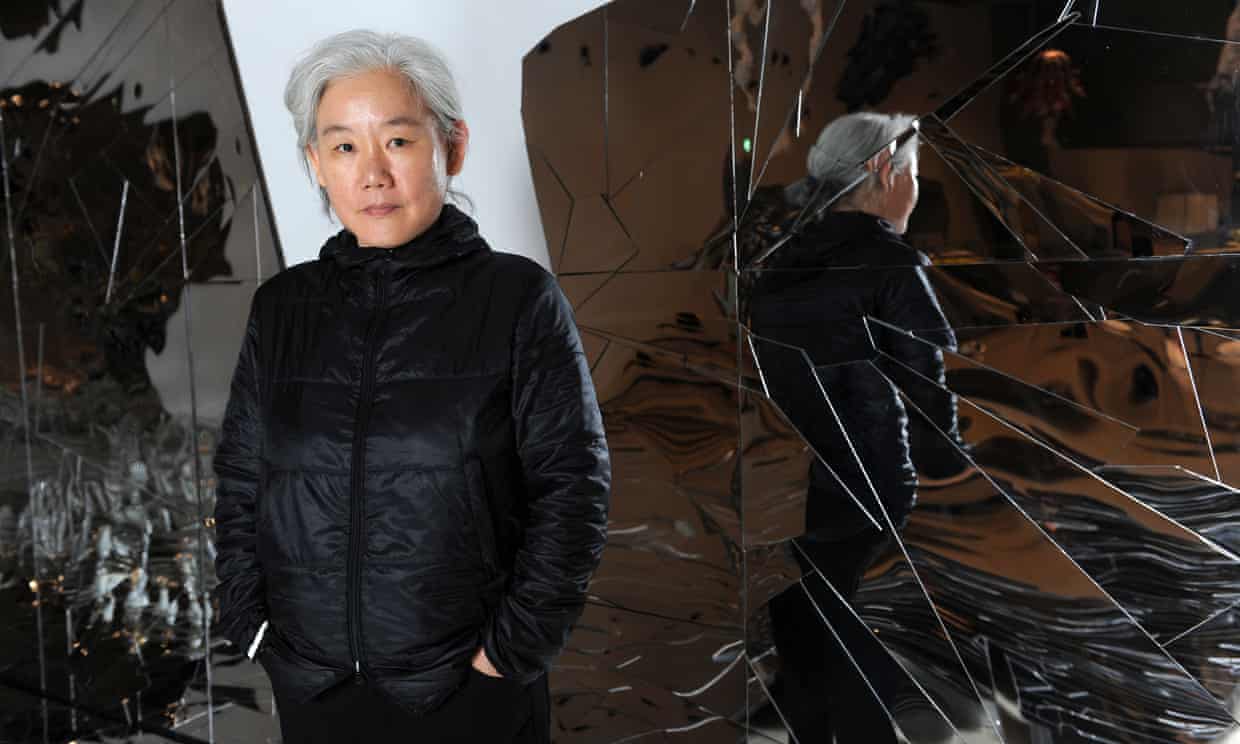
Floating cyborgs and a mutant octopus … the grotesque, gorgeous art of Lee Bul

Sci-fi and the human drive for self-perfection fuel the South Korean artist provocateur’s monstrous creations
Lee Bul’s earliest memories are defined by dust. In a military town outside Seoul, where she lived aged 11, many of the trees had been cut down for fuel, while, under the dictator Park Chung-Hee’s modernisation programme, new roads were begun and abandoned. The inhabitants of her neighbourhood’s cheap and fragile houses came and went: soldiers, farmers who worked the fields surrounding the haphazard development, and “wanderers”, such as Bul’s parents. They were leftwing activists whose home was routinely searched by the police for banned books and needed to live in a place where people weren’t too fussy about their neighbours.
While the world outside was dry, however, home was a Technicolor Oz. As political dissidents, her parents couldn’t attend group gatherings, even at work. Compelled to labour from home, sometimes with neighbours, her mother made handbags from glass beads. “There was another landscape inside our house,” she recalls. “One room with women working with beautiful colours.”
As origin stories go, it’s a setting worthy of the dystopian fiction Bul has long channelled in her art: sci-fi movie-spectacular sculptures and installations powered by utopian dreams and social critique. Her forthcoming mid-career survey at the Hayward Gallery in London will trace how, over the past three decades, she has established herself at the forefront of South Korean art.
When we meet at the gallery a few weeks before the opening, there are cyborg babes and multi-limbed monsters hanging from the ceiling. Mirrors wrapped in cellophane lean against walls, waiting to be assembled into luminous labyrinths. Technicians are tinkering inside a high-gloss black hunk of hollow mountain that looks like a panic room for Darth Vader, but is dedicated to the Russian literary theorist Mikhail Bakhtin. Throughout it all, Bul examines our flawed pursuit of perfection, be it improving our bodies, or remaking society. There’s a striking push and pull between the gorgeous and grotesque. Get up close to the darkly glittering skin of a mutant octopus creation, and you see that its sequins are matted with plant life, like something washed up in a drain.
Bul thinks the strange contrasts of her formative years are central to her approach; they have clearly engendered a strong ironic streak in her work. She has a formative childhood memory of lovers riding a motorbike that crashed into a bakery, in a smash of blood and cake. “That was a beautiful accident,” she laughs throatily.
Her work is now highly crafted, with expensive production values. It’s a universe away from when she started out. This was 1980s Korea, where protesters faced torture, and she was working within a fledgling contemporary art scene with few international influences. “There were no role models. I had to create,” she says.
For Bul, her outsider status was crucial to her art: “Everything [about me] is in a minority. This is perfect for an artist.” There’s her unusual genderless name, which combined with her surname, sounds like the word blanket in Korean. She is also left-handed, something her teachers tried to suppress. “At school, they tied my hand,” she says. “At home, I was free to use it and I started drawing a lot.”
Her traditional art school was a disappointment, but discovering the postwar theatre of the absurd inspired Bul to break free. Her first notable work was in 1989; a performance called Abortion, a shocking mix of real and fake. Having distributed sweets to her audience, Bul hung upside down and nude, recounting her experiences of abortion, which was then illegal, while recreating something of its physical agony. Eventually, her onlookers took action and cut the ropes: “They never thought it was theatre. It was a real body and a real situation.”
The following year she took her unruly, boundary-breaking physicality to the street. Hanging from the Hayward’s rafters is a meaty, lobster-orange mutant fat suit, fingers and limbs sprouting from its fleshy folds. It’s huge – photographs can’t really convey what it must have taken the diminutive artist to don it, take a flight to Tokyo, and head downtown. “Of course, they didn’t want me on the plane,” she chuckles. “Finally, they said it’s too big and I would need two seats.” What impressed Bul, though, was how, in Tokyo, when prohibited from entering a temple because of the suit, a crowd had argued for her right to wear what she wanted: “They were thinking about human rights. It expanded my subject.”
Bul’s body politics and her insistence on her presence as a woman seem especially remarkable in a society as notoriously patriarchal as Korea’s: until 2005, men were legally heads of households. However, she says that her own experiences were not so bad, for one particular reason. “People were scared of me and thought I was a crazy woman. Of course, if I didn’t use this character, then it would probably have been very difficult.” She adds, “I know so many great women artists in Korea because, when women want to be an artist they have to sacrifice everything. It’s art alone for them, so they are very, very strong.”


Willing to Be Vulnerable, at the 20th Sydney Biennale, 2016. Photograph: Algirdas Bakas/Courtesy Studio Lee Bul

Transhuman? Cyborg W1-W4, 1998, by Lee Bul. Photograph: Yoon Hyung-moon/Studio Lee Bul